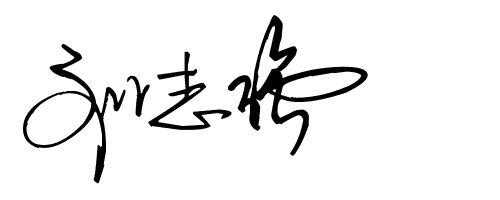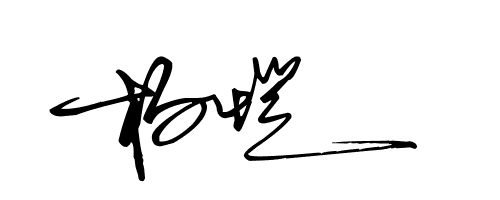

1. The temperament of the text itself
The word temperament is not only used to describe people, but the corresponding font itself also exists. Every word reveals The resulting temperaments are all different, such as "war" and "cultivation" in "fighting", "thinking" in "thinking", "design" in "design", etc. The collocations of fonts have different temperaments, so the first thing to consider when designing fonts is the meaning of a group of fonts.

2. Font recognition
For font design, recognizability is very important. When you are dealing with horizontal, vertical, horizontal, and dots, you must consider whether the font you design can be recognized by others, and whether the characters in this group of characters are somewhat similar. , whether it will reveal that the information conveyed is inaccurate enough to cause misunderstanding. For example: "Noon" and "Niu", "Qian" and "Qian", etc., all of which need to be carefully considered.

3. Selection of font form (character)
The implication and recognizability of the font are all there. The next thing to consider is the selection of the designed font. Whether you plan to use a flat or slender font, or even a calligraphy or a cartoon font, and the choice of this step cannot Neglect, because the feelings brought by these several forms are different: flat body--stable and powerful; slender body--most thin-line bodies are soft, elegant, and relatively feminine , strong sense of culture, pen-and-ink cartoon style--lively and lovely.
Note: The characteristics of the above four forms are only routine, and usually correspond to each other in the design process, and the boundaries are not so clear!

4. Font center of gravity control
The above points are all in place, so what is considered here is the control of the center of gravity of the group of fonts. Is it intended to control the center of gravity of the group of fonts at the center or at the top or bottom, and some even have the center of gravity at the left or at the bottom of the design? Right to achieve the overall balance or to achieve a dynamic beauty! This step is more conducive to the play of stroke changes later!

5. Addition, subtraction, multiplication and division of strokes, and the processing of continuous strokes
The entire set of fonts will inevitably encounter one or the other in the design, so when dealing with special font design, we must think of the addition, subtraction, multiplication, division of strokes, and the processing of continuous strokes to achieve the overall balance and even our more want to feel.
For example:
①The use of addition and subtraction: When we design a combination of characters with fewer strokes and characters with more strokes, we have to find a way to properly subtract some strokes that do not affect the recognition of the characters with more strokes or the characters with more strokes. Increase the number of strokes on the less text to achieve the effect. The precondition is not to affect the recognition of the font itself.
②Application of multiplication and division rules: Like the characters we usually design sometimes, when encountering two strokes crossing or tangent, we have to try our best to adjust the strokes a little thinner to achieve visual balance. When we design the strokes, we generally increase the width of the vertical strokes and then transform them, so that the designed fonts can be more powerful, and the strokes can be more harmonious.
③The processing of connecting strokes between characters and the replacement of graphics: Both of these are for a more vivid and meaningful processing method for the font as a whole. First of all, let’s talk about the continuous strokes between characters. There are mainly two forms for continuous strokes. One is that the strokes between characters can be connected, and there is a sense of a broken stroke. The second is two forms. Two characters can share one stroke, and the third method is the dislocation method that you usually see, looking for connectability in the dislocation of characters, reminding again, if you must connect when designing a group of fonts, then the above few If none of these can be achieved, everyone has to find a way to add lines or other things to connect, and we can’t impose a rigid form to design when dealing with word and word ligatures, because such processing will destroy the overall feeling , if we really can’t achieve the connection of the whole group of characters, let’s give up. These are just a kind of experience in designing fonts. Many forms require everyone to try a lot and accumulate a lot. As for the replacement or addition of graphics in font design, it is all to make the font more beautiful and vivid, so I won’t say much here, as long as the replacement or addition of graphics is handled properly, and It does not affect the recognition, so let's try it boldly!

6. Details processing and adjustment
After all, the most difficult part of font design is the handling between horizontal and vertical and left and right. When designing fonts, if the relationship between horizontal and vertical and left and right is not properly handled, it is easy to cause chaos and disharmony in the design of the overall font , and the disharmony here is mainly caused by the lack of harmony between the horizontal and vertical strokes and the left and right strokes, and the overall failure to achieve an aesthetic effect. Regarding the handling of the strokes, Yipin Design has summarized the following points in the design, which can be used for everyone refer to:
(1) When there are many horizontal and vertical strokes and few strokes: the general processing method is to find a way to process the strokes into vertical strokes or horizontal strokes to achieve the coordination of the overall strokes.
(2) When the horizontal and vertical strokes are basically equal: For the situation where the strokes of the horizontal and vertical strokes are relatively equal, I generally deal with the strokes near the middle of the whole group of fonts with a small point and gradually become larger on both sides. Processing methods to achieve the unity of strokes.
(3) When there are many left and right strokes, but few horizontal and vertical strokes: In this case, the vertical strokes are generally processed at a slant, or the top of the vertical stroke is relatively straight and the bottom is relatively oblique.
The above three points are just a common way of dealing with individuals, and I hope it will be helpful to everyone. There are also some dots. If the dots are not handled well for a group of characters as a whole, they will feel scattered as a whole. Therefore, when designing fonts, dots are generally combined with horizontal, vertical, left, and right. processed as a whole.

7. Processing between font sizes
For font design, the processing of font size can not only consider the size in mathematics, but the corresponding visual size is what we want, because in font design, fonts with simpler strokes and strokes are cumbersome The visual impact of different fonts is different, so the size should be handled in moderation, and the design should not only consider the size in mathematics.

Zhang Zhan

Liu Zhiqiang

Yang Kai
Copyright statement, the pictures and texts are from the Internet, if there is any infringement, please contact to delete
Articles are uploaded by users and are for non-commercial browsing only. Posted by: Lomu, please indicate the source: https://www.daogebangong.com/en/articles/detail/Signature%20Design%20%20Essentials%20of%20Artistic%20Signature%20Typography%20Super%20Detail.html

 支付宝扫一扫
支付宝扫一扫 
评论列表(196条)
测试